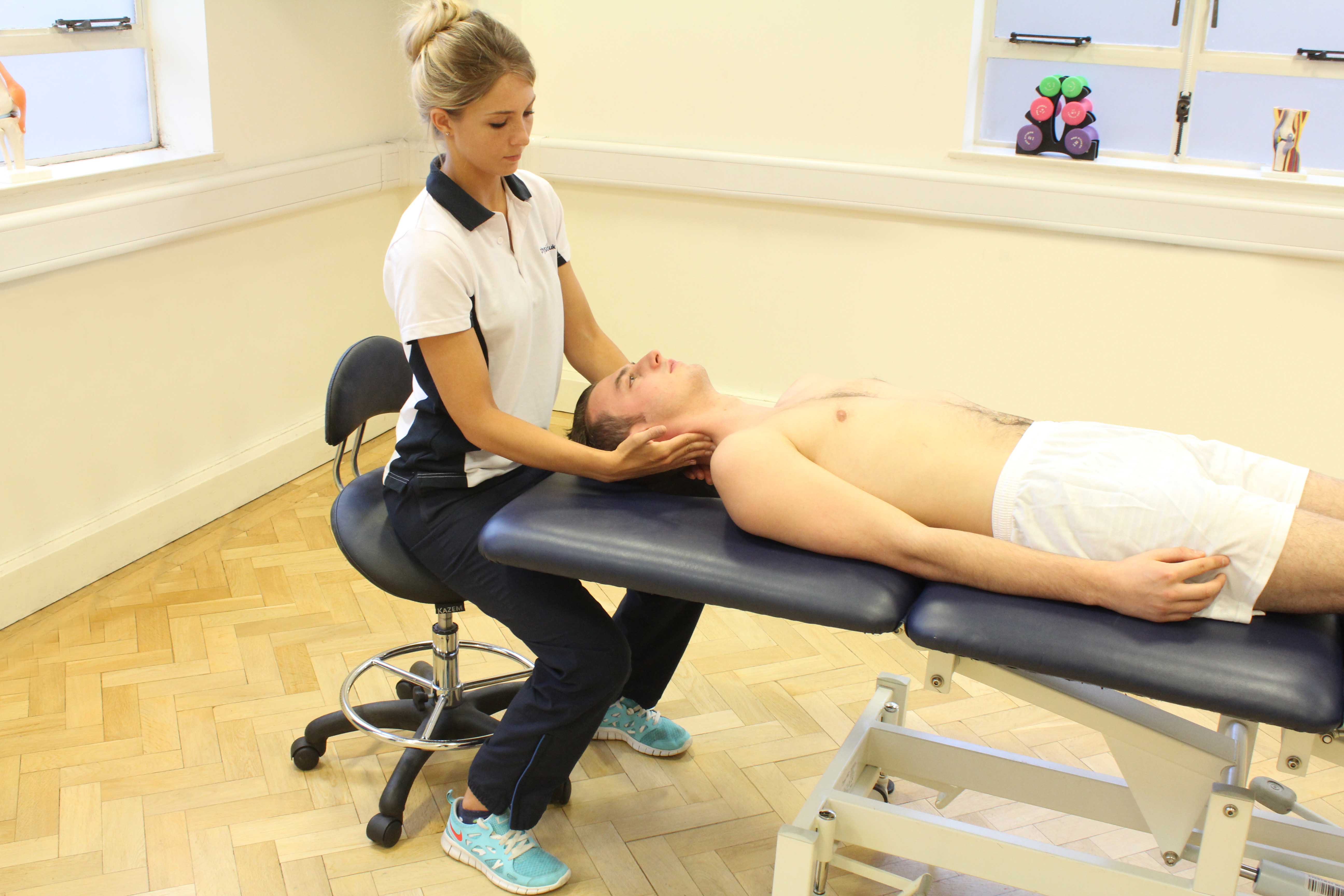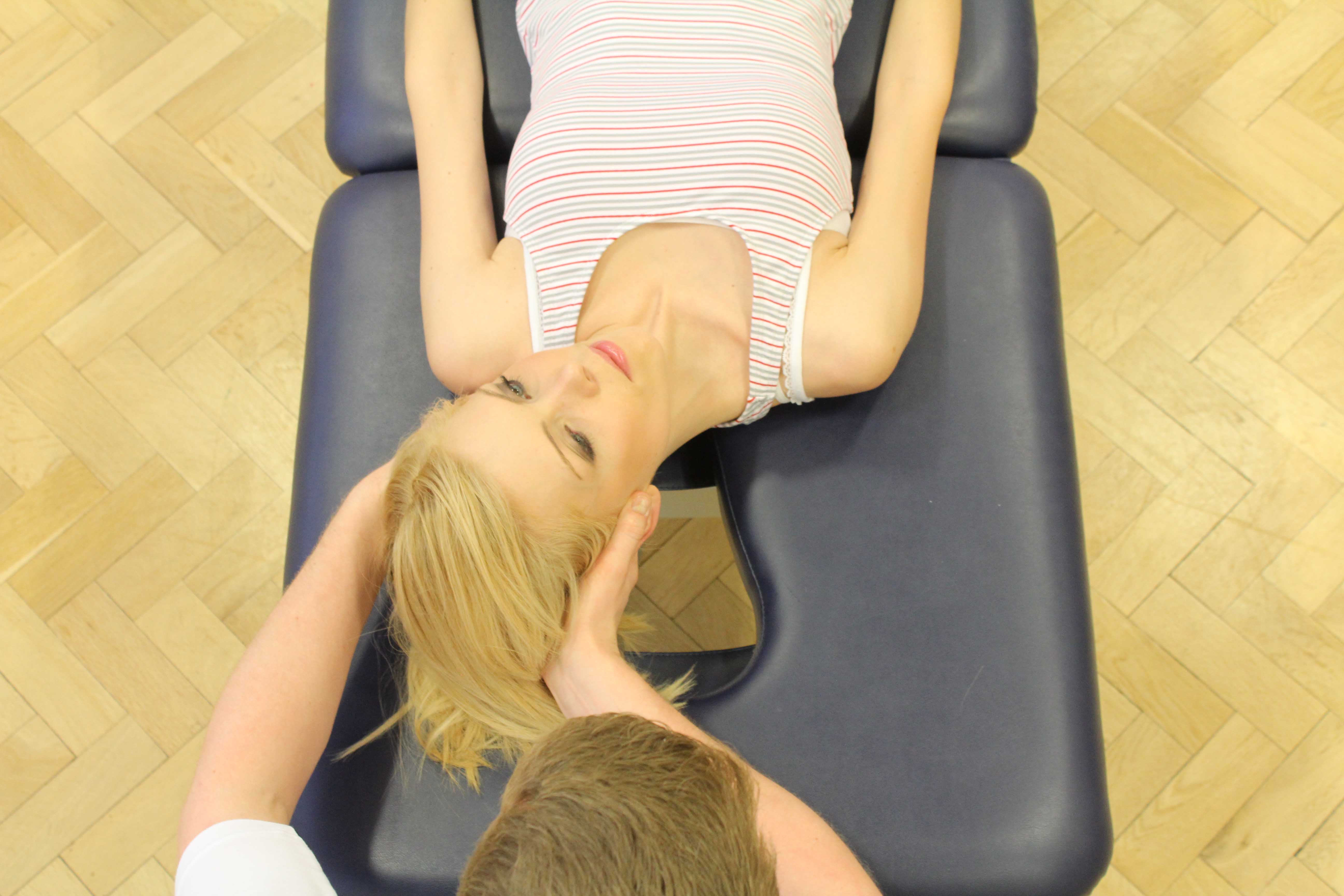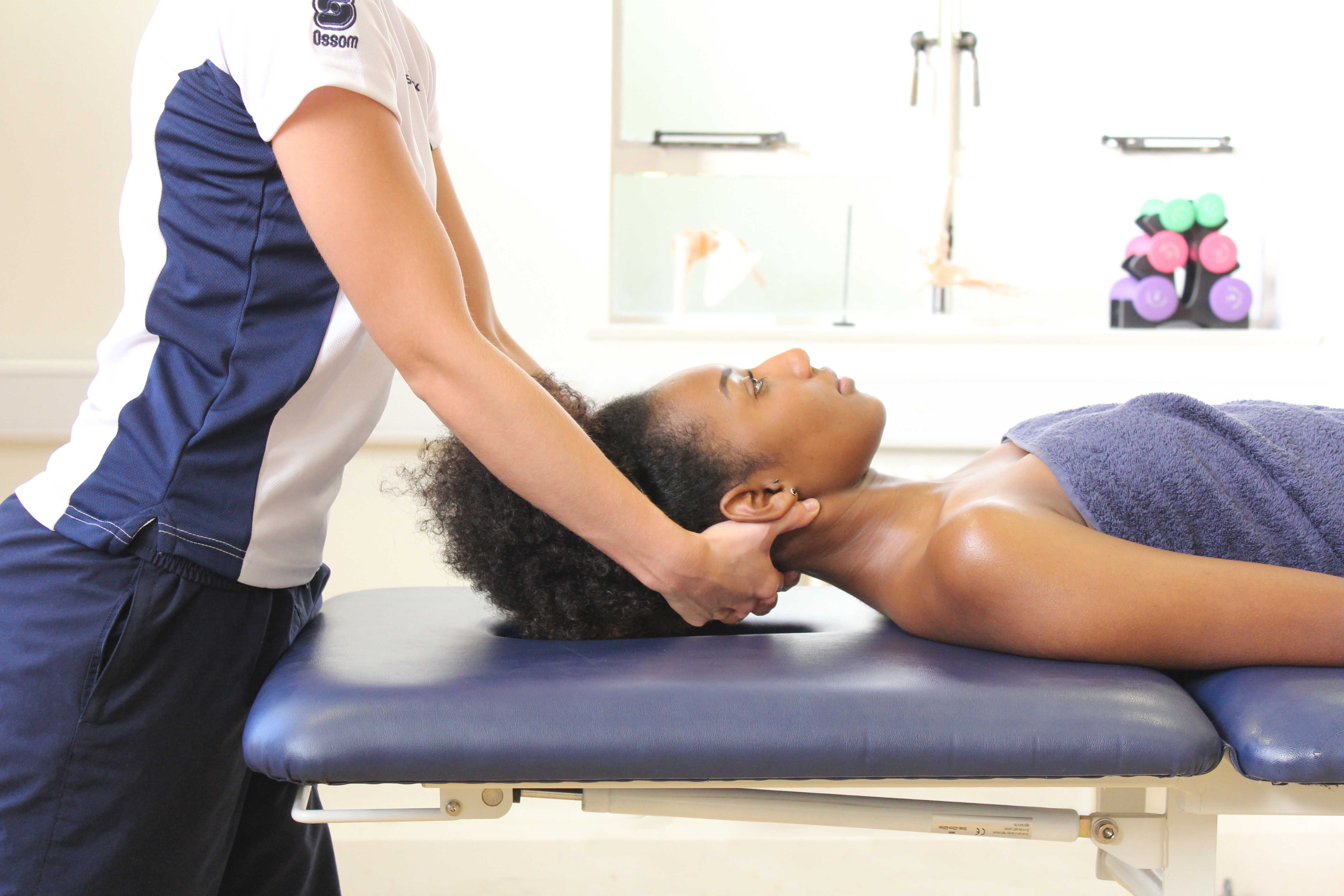What is cervical stenosis?
The neck is made up of seven bones called vertebrae. In between these vertebrae there are shock absorbing discs. The spinal cord runs through these vertebrae. Between each vertebra, the spinal cord branches off into smaller nerves. These are called nerve roots and provide a nerve supply the head, neck, shoulders and arms.
 Above: Soft tissue massage of sternocliedomastoid muscles in neck
Above: Soft tissue massage of sternocliedomastoid muscles in neckCervical stenosis is a condition caused by the natural aging of the spine. As we get older our discs become thinner and sometimes the edges of our vertebrae become rough. This wear and tear in the neck can lead to a narrowing in the canals that the spinal cord or the smaller nerve branches (or nerve roots) pass through. Physiotherapy is an effective way of minimising the symptoms of cervical stenosis.
 Above: Experienced Physiotherapist conducting an assessment of the cervical spine, muscles and connective tissues in the neck
Above: Experienced Physiotherapist conducting an assessment of the cervical spine, muscles and connective tissues in the neckWhat are the symptoms of cervical stenosis?
If the stenosis (or narrowing) is compressing the nerve root you will often experience pain and pins and needles in one of your arms.
Other symptoms include:
 Above: Stretches and massage applied to the cervical spine to relieve stiffness and pain
Above: Stretches and massage applied to the cervical spine to relieve stiffness and painWhat should I do if I have cervical stenosis?
If you suspect that you may have a cervical stenosis you should arrange a physiotherapy assessment.
Physiotherapy treatment for cervical stenosis.
Physiotherapy is very important in the treatment of cervical stenosis. Following your initial assessment your physiotherapist will lead you through a specific programme of exercises to strengthen and provide stability to the neck whilst increasing the endurance of the neck muscles and increasing the flexibility of the neck itself. Other treatment includes:
Does cervical stenosis have any long-term effects?
In some cases, the symptoms that you are experiencing will not settle with conservative treatment, such as physiotherapy, alone. There are a number of surgical techniques that can be used to treat cervical stenosis. Surgery is performed to widen the canals that the spinal cord or the smaller nerve roots pass through. This relieves the compression on the nerve. All surgical procedures, however, contain a certain amount of risk. In most cases, surgery will not be performed unless conservative management, such as physiotherapy, has been explored fully.
 Above: Mobilisations of the vertebrea in the cervical spine to reduce pain and stiffness
Above: Mobilisations of the vertebrea in the cervical spine to reduce pain and stiffnessTo arrange a physiotherapy appointment call Physio.co.uk on 0330 088 7800 or book online today.

 0330 088 7800
0330 088 7800

































